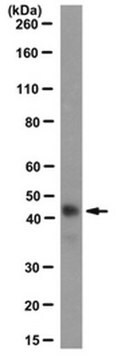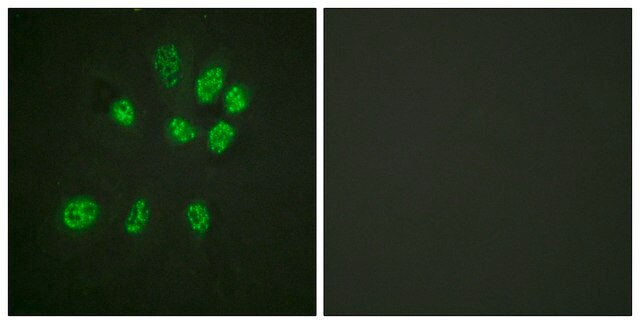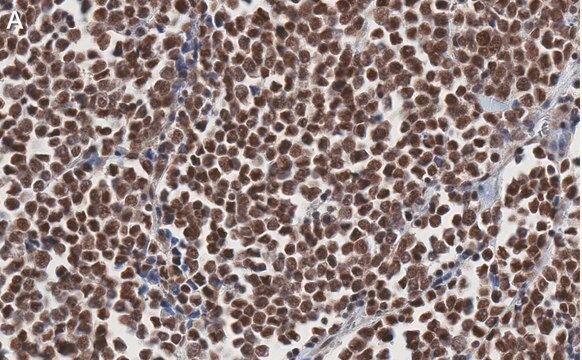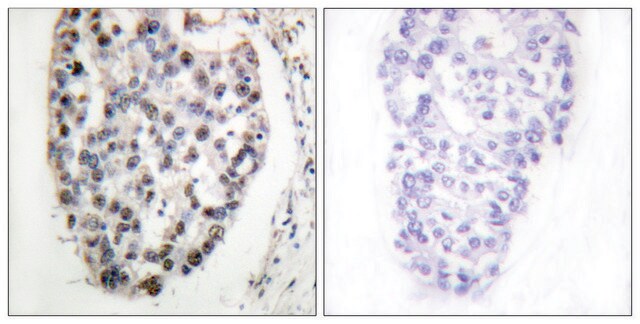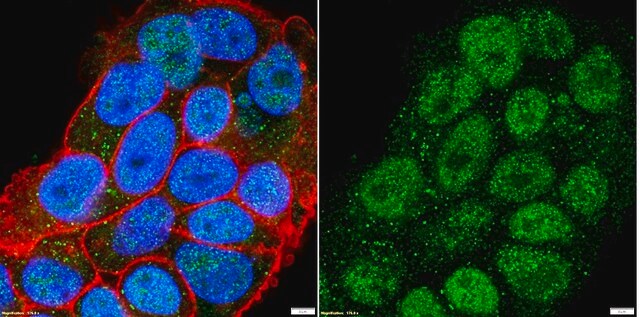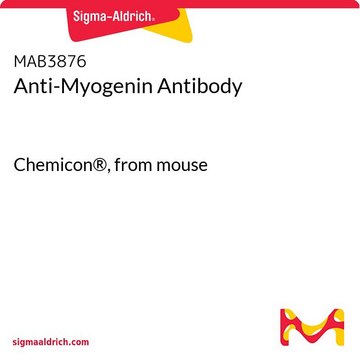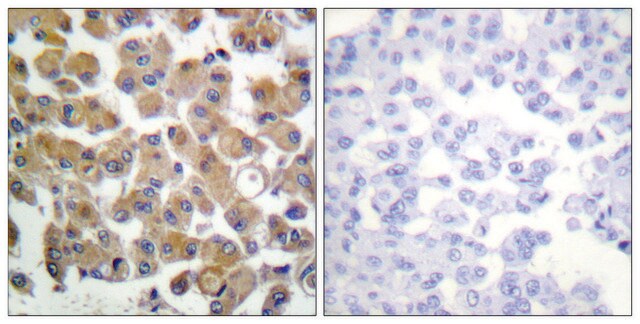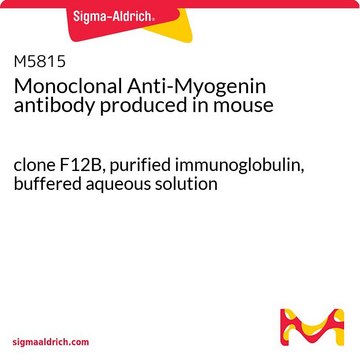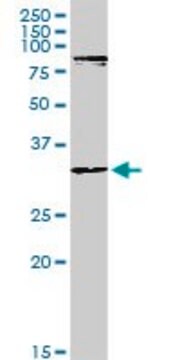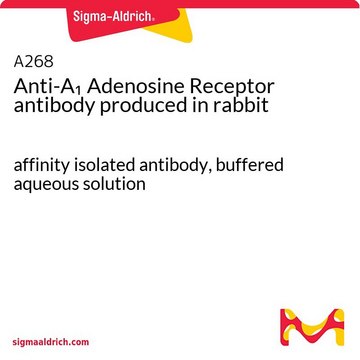M6190
Monoclonal Anti-MYOD1 antibody produced in mouse
clone 5.2F, purified immunoglobulin, buffered aqueous solution
Synonyme(s) :
Anti-Myogenic Differentiation Antigen 1
About This Item
Produits recommandés
Source biologique
mouse
Niveau de qualité
Conjugué
unconjugated
Forme d'anticorps
purified immunoglobulin
Type de produit anticorps
primary antibodies
Clone
5.2F, monoclonal
Forme
buffered aqueous solution
Poids mol.
antigen 34 kDa
Espèces réactives
human, rat, chicken, mouse
Concentration
1.0 mg/mL
Technique(s)
immunocytochemistry: suitable
immunohistochemistry (formalin-fixed, paraffin-embedded sections): 2-4 μg/mL
immunohistochemistry (frozen sections): 2-4 μg/mL
immunoprecipitation (IP): 2 μg using 1 mg protein lysate
western blot: 1 μg/mL (reacts with the ~45 kDa protein)
Isotype
IgG2a
Numéro d'accès UniProt
Conditions d'expédition
wet ice
Température de stockage
−20°C
Informations sur le gène
human ... MYOD1(4654)
mouse ... Myod1(17927)
rat ... Myod1(337868)
Description générale
Immunogène
Application
- immunofluorescence staining at a 1:50 dilution
- western blotting
- immunostaining at a 1:300 dilution
Actions biochimiques/physiologiques
Forme physique
Clause de non-responsabilité
Vous ne trouvez pas le bon produit ?
Essayez notre Outil de sélection de produits.
En option
Code de la classe de stockage
10 - Combustible liquids
Classe de danger pour l'eau (WGK)
nwg
Point d'éclair (°F)
Not applicable
Point d'éclair (°C)
Not applicable
Faites votre choix parmi les versions les plus récentes :
Déjà en possession de ce produit ?
Retrouvez la documentation relative aux produits que vous avez récemment achetés dans la Bibliothèque de documents.
Notre équipe de scientifiques dispose d'une expérience dans tous les secteurs de la recherche, notamment en sciences de la vie, science des matériaux, synthèse chimique, chromatographie, analyse et dans de nombreux autres domaines..
Contacter notre Service technique